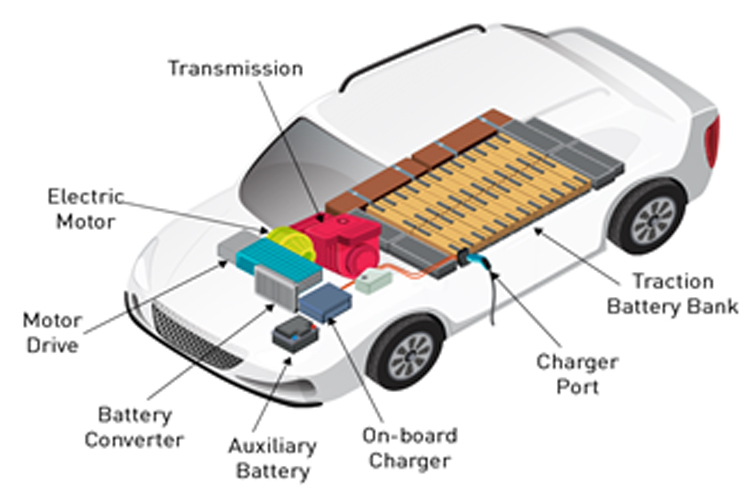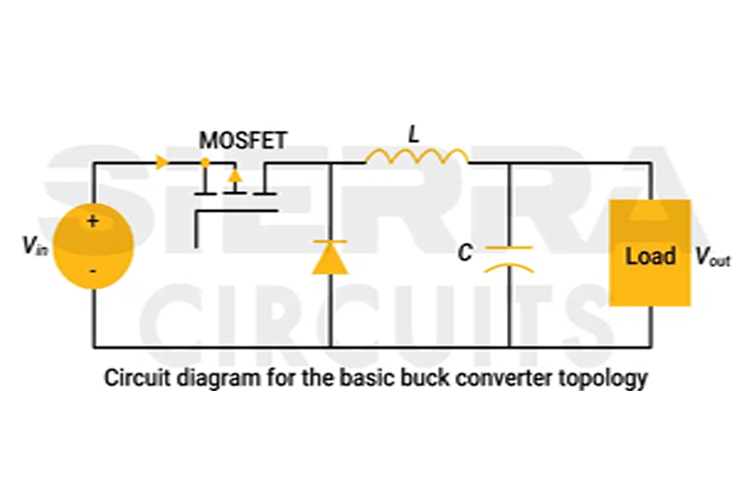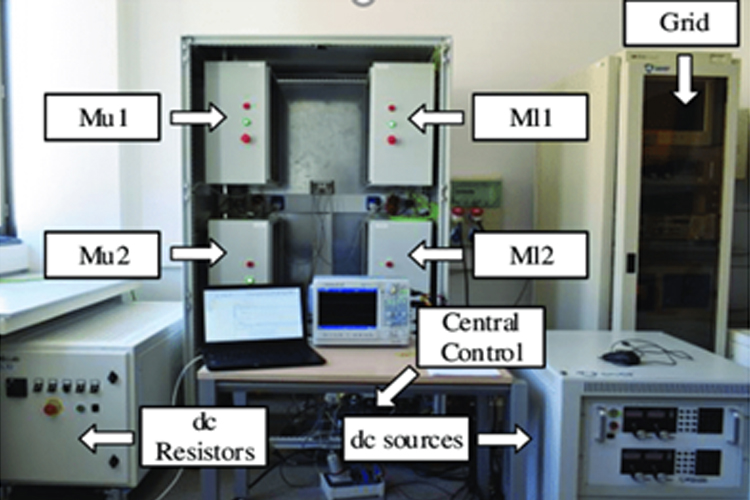Laboratory
Power Electronics and Drives Lab
Power Electronics and Drives Lab
About
The objective of this power electronics and drives lab is to give the students a favourable atmosphere to comprehend certain crucial ideas and applications in the field of power electronics and electrical drives. This laboratory is designed to help students become proficient in the operation and control of power semiconductor devices, converters, and motor drive systems. It enables students to analyze the characteristics of devices such as SCRs, MOSFETs, and IGBTs, and to evaluate the performance of rectifiers, choppers, inverters, and AC voltage controllers. Additionally, the lab provides hands-on experience in controlling the speed and torque of DC and AC motors using open- and closed-loop control methods. The students can also learn to implement PWM techniques and feedback mechanisms, and simulate drive systems using MATLAB and Simulink for design validation and performance optimization.
Core Areas
Facilities
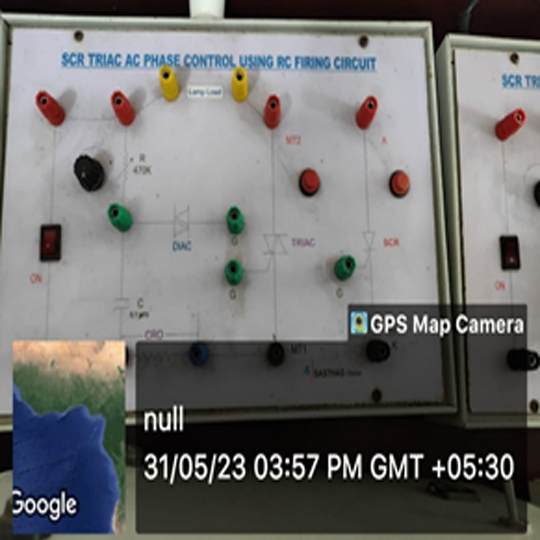
SCR Triac AC Phase Control
The SCR/TRIAC AC Phase Control Kit is an essential trainer used in power electronics labs to help students visualize and experiment with controlled AC power delivery. Used to Learn how phase control affects real-time voltage delivery, power factor, and harmonics.
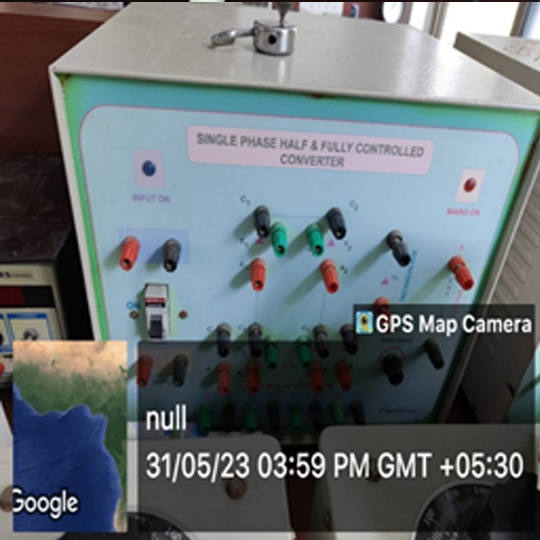
Single Phase Half & Fully Controlled Converter
The Single-Phase Half & Fully Controlled Converter Kit is used in power electronics labs to help students understand the principles of controlled rectification and AC-to-DC conversion using SCRs and diodes. It enables hands-on exploration of half-controlled circuits (with mixed diode-SCR configurations) and fully controlled setups (using only SCRs), allowing learners to observe how firing angles influence the average output voltage and waveform shape across resistive and inductive loads. This kit plays a key role in demonstrating essential concepts such as phase control, ripple effects, and load response, which are fundamental to designing motor drives, regulated power supplies, and battery chargers.
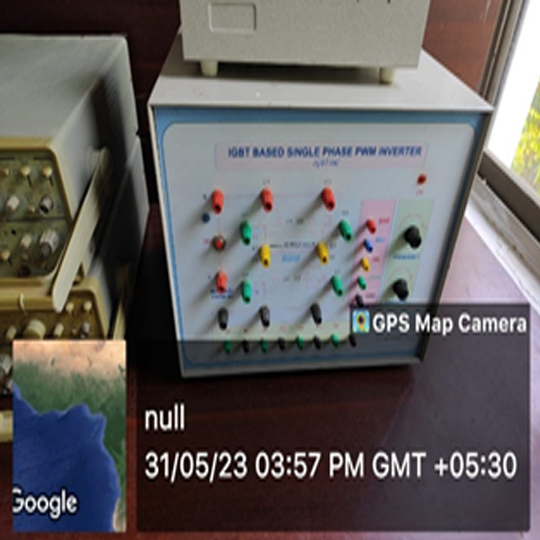
IGBT based Single Phase PWM
The IGBT-Based Single-Phase PWM Kit is used in power electronics laboratories to demonstrate pulse-width modulation techniques for efficient AC-to-DC and DC-to-AC conversion using Insulated Gate Bipolar Transistors (IGBTs). This kit helps students explore the switching behavior of IGBTs under high-speed, high-voltage conditions and observe how PWM waveforms are generated and modulated to control output voltage and frequency. It is instrumental in teaching applications such as inverter operation, harmonic reduction, and power factor improvement, especially in motor control and renewable energy interfacing.
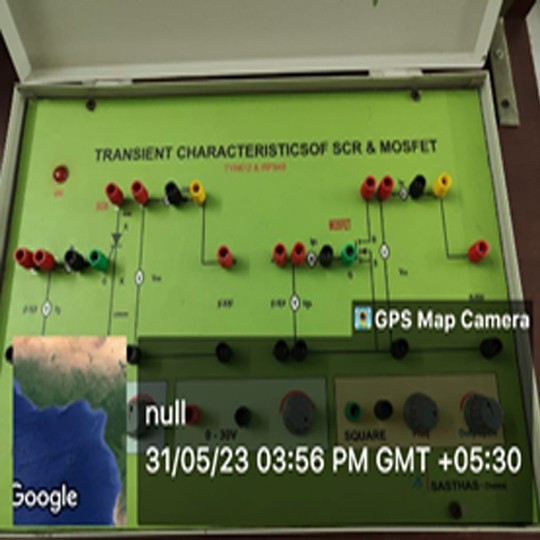
Transient Characteristics of SCR & Mosfet
The Transient Characteristics of SCR & MOSFET Kit is used in power electronics labs to study the dynamic switching behavior and response times of these key semiconductor devices during turn-on and turn-off periods. By applying controlled gate signals and observing voltage and current waveforms across resistive or inductive loads, students can analyze parameters like delay time, rise time, fall time, and turn-off time, which are critical in high-speed switching applications. This kit helps learners understand how SCRs handle latching and holding currents in unidirectional control, while MOSFETs excel in fast, voltage-controlled switching. It also supports waveform analysis.
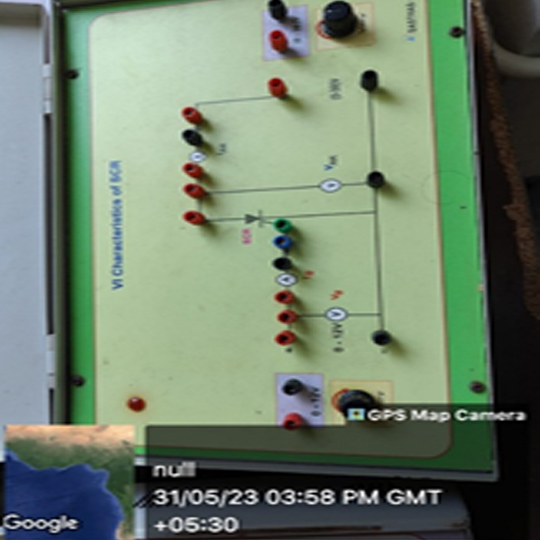
VI Characteristic of SCR
The VI Characteristic of SCR Kit is used in power electronics laboratories to help students understand the static voltage-current behaviour of a Silicon-Controlled Rectifier (SCR). It enables learners to plot the characteristic curve by varying gate currents and observing the forward and reverse blocking regions, latching current, and holding current on a CRO or digital meter. This hands-on experiment demonstrates how the SCR remains off until triggered and how its conduction state depends on gate pulse and load conditions.
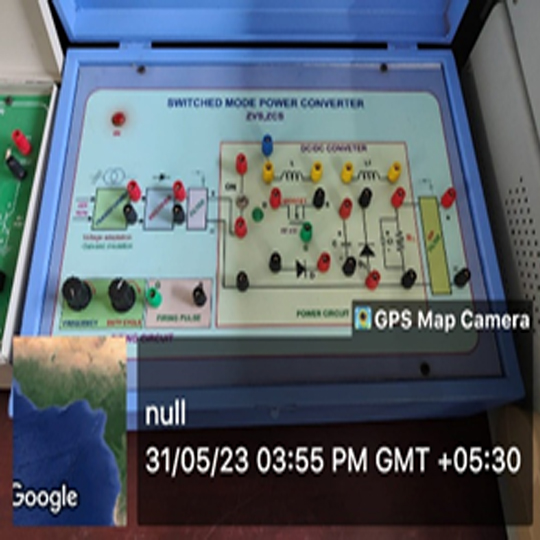
Switched Mode Power Converter
The Switched Mode Power Converter Kit is widely used in power electronics laboratories to introduce students to the principles of high-frequency, energy-efficient power conversion. It allows learners to experiment with topologies like buck, boost, buck-boost, and push-pull converters using fast-switching semiconductor devices such as MOSFETs or IGBTs. By adjusting duty cycles and observing voltage regulation under various load conditions, students gain insights into how pulse-width modulation (PWM) governs output characteristics. The kit also supports waveform monitoring and thermal behavior studies, making it crucial for understanding compact power supplies in modern electronics, renewable systems, and battery-operated devices.



